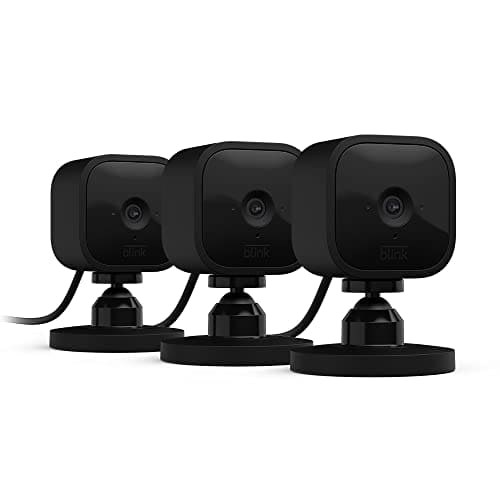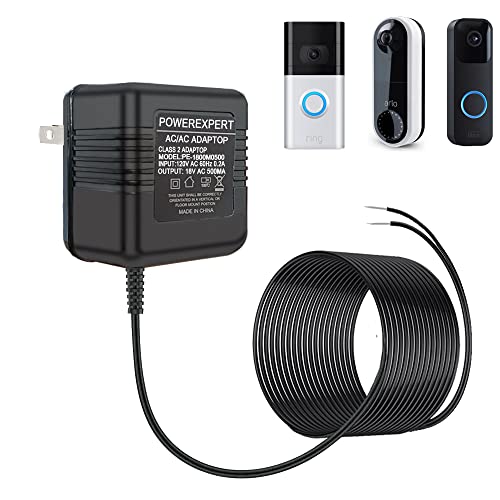As technology continues to shape our homes and make them smarter, one area that has seen significant advancements is the humble doorbell. Gone are the days of a simple chime announcing a visitor’s arrival. Now, we have smart doorbells that offer a range of features aimed at enhancing security and convenience. But are these new gadgets worth the investment? In this blog post, I will explore the differences between smart doorbells and traditional doorbells, highlighting the advantages and disadvantages of each. By the end, you’ll have a clearer understanding of which option best suits your needs and preferences. So, let’s dive in and discover the world of smart doorbells versus traditional doorbells.
Top-Rated Energy Efficient Smart Doorbells
What is a smart doorbell?
Smart doorbells are modern technological devices that have revolutionized the way we interact with our front doors. They combine traditional doorbells with advanced technology to provide homeowners with enhanced security, convenience, and peace of mind. In this blog section, we will explore the features and functionalities of smart doorbells and how they can benefit you.
Video Surveillance
One of the key features of a smart doorbell is its integrated video surveillance capabilities. With a built-in camera, you can see who is at your front door from anywhere, whether you’re at home or away. This is particularly useful for monitoring package deliveries, verifying visitors, or deterring potential intruders.
Some popular smart doorbell models that offer video surveillance include:
- Ring Video Doorbell Pro
- Nest Hello
- Arlo Video Doorbell
Two-Way Audio Communication
Smart doorbells also come equipped with two-way audio communication, allowing you to have a conversation with whoever is at your front door. This is especially useful for greeting guests, giving instructions to delivery personnel, or even scaring off potential burglars. The audio quality is typically clear and loud, ensuring effective communication.
Notable smart doorbells with two-way audio communication include:
- Eufy Security Video Doorbell
- August Doorbell Cam Pro
- SimpliSafe Video Doorbell Pro
Motion Detection
Another important feature of smart doorbells is motion detection. These devices use advanced sensors to detect movement near your front door and send you instant notifications on your smartphone or other connected devices. This allows you to stay informed about any activity happening around your home, even when you’re not physically present.
Smart doorbells known for their reliable motion detection include:
- RemoBell S
- SkyBell HD
- Zmodo Greet Pro
Smartphone Integration
Smart doorbells seamlessly integrate with your smartphone, allowing you to control and monitor your front door from anywhere. Through dedicated mobile applications, you can receive notifications, view live video feeds, and access recorded footage. This level of connectivity ensures that you never miss an important visitor or package delivery.
Leading smart doorbells with excellent smartphone integration include:
- Google Nest Doorbell (Battery)
- Ring Video Doorbell 4
- Arlo Essential Wired Video Doorbell
Benefits of Smart Doorbells
To summarize the advantages of smart doorbells, here are some key benefits:
- Enhanced security and peace of mind
- Convenient remote access and control
- Ability to communicate with visitors remotely
- Real-time alerts for motion detection
- Video footage for evidence or documentation
In conclusion, smart doorbells offer a wide range of features and functionalities that greatly enhance the security and convenience of your home. With video surveillance, two-way audio communication, motion detection, and smartphone integration, these devices provide an all-in-one solution for monitoring and managing your front door. Invest in a smart doorbell today and experience the benefits it brings to your daily life.
Note: Markdown formatting not visible in plain text.
Enhancing Home Security
Smart doorbells offer a range of features that greatly enhance home security. These devices are equipped with high-definition cameras, motion sensors, and two-way audio capabilities, allowing homeowners to monitor their front doors remotely. Here are some key advantages of smart doorbells in terms of home security:
- Video Surveillance: Smart doorbells provide live video feeds, allowing homeowners to see who is at their door even when they are not at home. This feature can help deter potential burglars and provide evidence in case of any suspicious activity.
- Motion Detection: With built-in motion sensors, smart doorbells can detect any movement near the front door. Homeowners receive instant notifications on their smartphones when someone approaches their property, giving them the ability to take appropriate action or alert authorities if necessary.
- Two-Way Communication: Smart doorbells enable homeowners to communicate with visitors in real time, regardless of their physical location. This feature is particularly useful for interacting with delivery drivers, giving instructions to guests, or even scaring away potential intruders.
- Remote Access: By connecting to a mobile app, smart doorbells allow homeowners to monitor their front doors from anywhere in the world. This adds an extra layer of security, providing peace of mind even when away on vacation or at work.
Providing Convenience
In addition to enhancing security, smart doorbells offer convenience that traditional doorbells cannot match. Here are some ways in which smart doorbells make everyday life easier:
- Remote Unlocking: Some smart doorbells can be integrated with smart locks, allowing homeowners to remotely unlock their doors for trusted individuals, such as family members or service providers. This eliminates the need for physical keys and offers a hassle-free solution for granting access.
- Package Delivery Management: With the rise in online shopping, missed package deliveries have become a common issue. Smart doorbells can solve this problem by providing the ability to communicate with delivery personnel and remotely unlock the door for package drop-off, ensuring secure and timely deliveries.
- Visitor Tracking: Smart doorbells can keep a record of all visitors, including the date, time, and duration of each visit. This feature is particularly useful for keeping track of maintenance workers, babysitters, or other service providers who need access to the property.
- Integration with Smart Home Devices: Many smart doorbells are compatible with other smart home devices, such as voice assistants, smart lighting systems, or security cameras. This integration allows homeowners to create a seamless and interconnected smart home ecosystem, providing further convenience and control.
Improving Energy Efficiency
Smart doorbells are designed to be energy-efficient, offering benefits beyond security and convenience. Here’s how they contribute to energy savings:
- Low Power Consumption: Smart doorbells are designed to use minimal power, ensuring long battery life or reduced electricity consumption. This is particularly important for wireless models that rely on battery power.
- Smart Notifications: Unlike traditional doorbells that continuously ring until answered, smart doorbells send notifications to homeowners’ smartphones or other devices. This eliminates unnecessary energy consumption from constant ringing, making them more eco-friendly.
- Integration with Energy Management Systems: Some smart doorbells can be integrated with energy management systems, allowing homeowners to optimize their energy usage based on home occupancy. For example, when the doorbell detects that no one is home, it can automatically adjust the thermostat or turn off lights to save energy.
Additional Functionalities
Apart from the core advantages mentioned above, smart doorbells often come with additional functionalities that further enhance their appeal. These may include:
- Cloud Storage: Some smart doorbell brands offer cloud storage options, allowing homeowners to store recorded videos and access them remotely anytime. This is especially useful for reviewing past events or providing evidence in case of incidents.
- Customizable Motion Zones: Many smart doorbells allow users to define specific areas where motion detection should be active. This customization ensures that homeowners only receive notifications for relevant events, reducing false alarms and unnecessary interruptions.
- Smart Integration: Smart doorbells can integrate with other smart home devices, such as security systems or voice assistants, to create a comprehensive and interconnected smart home ecosystem. This integration allows for seamless control and automation of various aspects of home security and convenience.
In conclusion, smart doorbells offer significant advantages over traditional doorbells. From enhancing home security to providing convenience and improving energy efficiency, these devices are a valuable addition to any home. With their advanced features and additional functionalities, smart doorbells provide homeowners with peace of mind, convenience, and control over their front door access and security.
Advantages of traditional doorbells
Traditional doorbells have been a staple in homes for decades, providing a reliable and straightforward way to alert homeowners of visitors. While smart doorbells have gained popularity in recent years, traditional doorbells still offer several advantages worth considering. In this section, we will explore these advantages and highlight why traditional doorbells can be a practical choice for many homeowners.
1. Simplicity
One of the primary advantages of traditional doorbells is their simplicity. Unlike smart doorbells, which come with a multitude of features and require smartphone integration, traditional doorbells function on a basic principle. When a visitor presses the button, it triggers a chime or bell inside the house, alerting the homeowner.
This simplicity makes traditional doorbells easy to use for all age groups, including children and elderly individuals who may not be comfortable with smartphone technology. Additionally, the lack of complex features means that traditional doorbells are less prone to malfunctions, ensuring reliable performance over time.
2. Lower Cost
Another notable advantage of traditional doorbells is their lower cost compared to smart doorbells. Smart doorbells often come with advanced technologies and integration capabilities, which significantly increase their price. On the other hand, traditional doorbells are typically more affordable, making them a budget-friendly option for homeowners.
Not only are the initial costs lower, but traditional doorbells also require less maintenance and fewer additional accessories. Smart doorbells may require subscriptions to access certain features or cloud storage, which can add to the overall cost over time. With traditional doorbells, homeowners can avoid these additional expenses.
3. Ease of Installation
Installing a traditional doorbell is a straightforward process that most homeowners can tackle on their own. All that is typically required is connecting the doorbell button to the chime unit inside the house. With basic electrical knowledge and a few tools, homeowners can have their traditional doorbell up and running in no time.
In contrast, smart doorbells often require more complex installation procedures. They may involve connecting to Wi-Fi networks, configuring smartphone apps, and sometimes even replacing the existing doorbell wiring. This added complexity can be daunting for those with limited technical skills or who prefer a hassle-free installation process.
Limitations or Drawbacks
While traditional doorbells offer numerous advantages, it is important to be aware of their limitations. Some drawbacks to consider include:
- Lack of advanced features: Traditional doorbells do not offer the advanced features found in smart doorbells, such as video recording, two-way communication, or integration with other smart home devices.
- Limited customization: Traditional doorbells often come with a limited selection of chime sounds or melodies compared to the vast options available with smart doorbells.
- Limited accessibility: Since traditional doorbells rely on audible alerts, they may not be suitable for individuals with hearing impairments. Smart doorbells, on the other hand, often offer visual notifications through smartphone apps.
Despite these limitations, traditional doorbells remain a reliable and practical option for many homeowners, offering simplicity, cost-effectiveness, and ease of installation.
In conclusion, if you prioritize a straightforward and budget-friendly doorbell solution without the need for advanced features, a traditional doorbell may be the ideal choice for you. Consider your specific needs and preferences when making a decision, and remember that traditional doorbells continue to serve their purpose effectively in many households.
Factors to consider when choosing between smart doorbells and traditional doorbells
When it comes to choosing between smart doorbells and traditional doorbells, there are several important factors to consider. Both options have their advantages and drawbacks, so it’s crucial to weigh them against your specific needs and preferences. In this blog post, we will delve into the key factors you should take into account to make an informed decision.
Budget
One of the first factors to consider is your budget. Smart doorbells tend to be more expensive compared to traditional doorbells due to their advanced features and technology. However, the price difference can vary depending on the specific brand and model you choose. Here are a few things to keep in mind:
- Smart doorbells usually require a one-time upfront cost, while traditional doorbells are more cost-effective.
- Some smart doorbells may also come with subscription fees for cloud storage or advanced features, so factor that into your budget as well.
Desired Features
The features offered by smart doorbells are often what make them an attractive option for homeowners. Consider the features that are most important to you and align with your specific needs. Here are some common features to consider:
- Video recording and live streaming: Smart doorbells typically offer video recording capabilities, allowing you to monitor your doorstep in real-time and review footage later on. Traditional doorbells, on the other hand, lack this feature.
- Motion detection: Many smart doorbells come equipped with motion sensors that can alert you when someone approaches your door. This can be invaluable for security purposes.
- Two-way audio: With two-way audio, you can communicate with visitors at your door, even when you’re not at home. This feature is often absent in traditional doorbells.
Home Compatibility
Before choosing a smart doorbell, it’s important to ensure that it is compatible with your home. Consider the following aspects:
- Wi-Fi connectivity: Smart doorbells require a stable Wi-Fi connection for optimal performance. Make sure that your home has a reliable Wi-Fi network that can support the doorbell’s connectivity needs.
- Power source: Smart doorbells often require a power source, either through wiring or battery power. Check if your home has the necessary wiring or if you prefer the convenience of a battery-powered option.
- Compatibility with existing systems: If you have an existing home security system or smart home devices, ensure that the smart doorbell you choose is compatible with them.
Personal Preferences
Lastly, consider your personal preferences and lifestyle when making your decision. Here are some factors to think about:
- Design and aesthetics: Smart doorbells come in various designs, so consider one that complements the overall appearance of your home.
- Ease of installation: Traditional doorbells are typically easier to install since they don’t require any additional wiring or connectivity setup. However, if you’re comfortable with technology and don’t mind the installation process, smart doorbells can offer more advanced features.
- User interface: Take into account the user interface of the smart doorbell, including the mobile app and any additional control options. Ensure that it is user-friendly and aligns with your technological comfort level.
By considering these factors, you can make a well-informed decision between smart doorbells and traditional doorbells that suits your budget, desired features, home compatibility, and personal preferences. Remember to research different brands and models, read customer reviews, and weigh the pros and cons before making your final choice.
Key Takeaways and Final Thoughts
In summary, the blog post explored the comparison between a smart doorbell and a traditional doorbell. We discussed the features, functionality, and benefits of each option. It is evident that a smart doorbell offers advanced features such as remote access, motion detection, and integration with smart home systems. On the other hand, a traditional doorbell is simple, reliable, and cost-effective.
When considering which option to choose, it is essential to assess your specific requirements and preferences. If convenience, security, and connectivity are important to you, a smart doorbell may be the ideal choice. However, if simplicity, affordability, and ease of use are your priorities, a traditional doorbell may suffice.
Ultimately, the decision between a smart doorbell and a traditional doorbell is personal and subjective. It is crucial to weigh the pros and cons of each option and determine which aligns best with your needs. Whichever option you select, both smart doorbells and traditional doorbells serve the primary purpose of alerting you to visitors at your doorstep.










